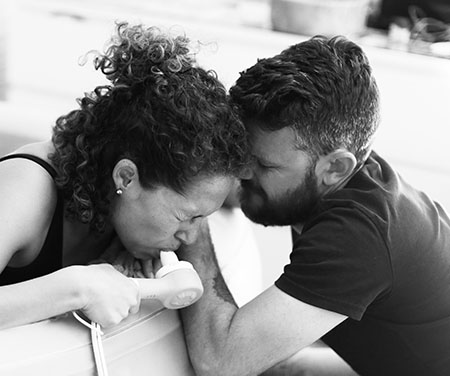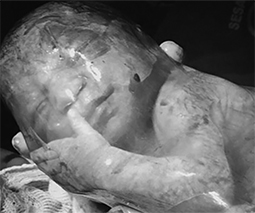Ready to deliver? Everything you need to know about cervical dilation

When you’re pregnant it can be scary to think an entire human baby needs to come out of your comparatively small vagina, but thankfully Mother Nature has designed our bodies to adapt to this tricky task at just the right moment. It’s called cervical dilation and here’s everything you need to know about it.
The cervix preparation show
Our cervix is the opening to our womb located between the uterus and vagina, and normally it’s tightly closed via thick cervical mucus which prevents harmful bacteria and other substances from entering and causing infection. You will have encountered this mucus before and during ovulation or at other times in your cycle, and it appears as an egg-white like discharge. When pregnant, the mucus at the base of your uterus becomes even thicker to create a seal which is called an operculum, or cervical plug.
As you reach the end of your pregnancy, your baby engages in your pelvis and drops closer to the cervix in preparation for the upcoming labour. This is when your cervix changes and begins to soften, shorten and become thinner in a process called effacement or ripening. At this point some of your mucus plug might also break away in what is known as ‘the show’ – usually identified as a pink/red/brown vaginal discharge due to blood vessels coming away with the normal mucus. Many women don’t notice this though (or it happens later in labour), so don’t worry if you don’t.

The dilation process
In order to deliver a baby vaginally, our cervix needs to open up – a lot. The process is called cervical dilation, and only when your cervix widens to around 10cm, can your baby’s head safely travel through into your vagina and then out into the world.
Tracking the dilation progress via a vaginal examination is how midwives and doctors determine how far along you are in labour. Placing two fingers inside your vagina and working out how many widths fit into your cervix will then determine how dilated you are, and therefore how close to delivery.
Some women dilate very quickly and others slowly. There is no standard time, however generally women who have previously given birth will find the cervical dilation process a lot quicker. To help you visualise what the dilation stages look like, a basic guide is: 1cm is the circumference of a blueberry, 2cm a cherry, 4cm a lime slice, 6cm a cookie, 8cm an orange slice and 10cm a bagel. Wow!
All dilated and ready to go!
Contractions can help bring on cervical dilation, but until your cervix starts to open up you are not technically in labour (even if it sure feels like it!). At 3-4cm dilation, you are considered to be in active labour (often when your obstetrician will arrive), however sometimes when you start to dilate there are no other signs of labour, which means you might not deliver until the next day (or even later than that). Every woman and every birth is different.
When your cervix is fully dilated at 10cm, the first stage of labour is over (there are two more to go – hang in there!). Just because you’re 10cm dilated, remember it doesn’t always mean the birth will happen straight after. The baby needs to make its way down the birth canal and only when it is in the perfect position, will you be advised to start pushing. Labour time can again vary with each woman, and once your baby has arrived you only have the final stage to go through which is delivering the placenta. Phew!









